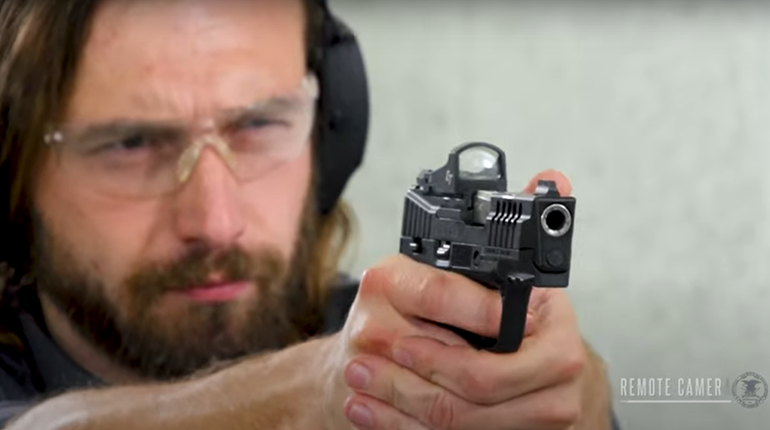
It seems that I am forever shooting my grip screws loose on my semi-automatic pistols. Every time I clean the guns I shoot most often, I find one or more of the grip screws have loosened under recoil and need to be tightened. On occasion, when I’m shooting a lot, I will lose one before I realize it has come loose and fallen out, never to be seen again.
I try to keep them snug, but don’t want to over-tighten for fear of stripping the screw or damaging the frame. I don’t want to glue them in as I’m afraid I’ll never be able to get them out again. Is there a guideline or method of securing the screws other than constantly tightening them to keep them in place?
Jason Klick via e-mail
Grip screws can be pesky little so-and-sos to keep in place sometimes. There are lots of factors to consider when addressing loosening grip screws in a semi-automatic pistol.
Typically they are held in place by friction between the threads of the screw and the threads in the frame. Friction between the grip itself and the underside of the screw’s head also plays a role in stabilizing the screw, as well as keeping the grips firmly in place so they don’t shift during shooting.
One of the most-prevalent causes of grip screws loosening is over-lubrication of the screw and/or the threaded portion of the frame that accepts the screw. While the head of the screw should be lubricated to protect it from rust and corrosion, the threaded portion of it should be kept dry, as should the threads in the frame that mates with the grip screw. Lubricating the threaded surfaces of either the frame or the grip screw reduces friction and therefore defeats the primary means of holding the grip screw in position.
The use of a small amount of pipe-joint compound, commonly used in the plumbing industry, does an excellent job of holding grip screws in place as does a little dab of clear nail polish on the threaded surfaces. Keep in mind a little goes a long way.
To avoid using “glue” to hold the grip screws in place, a low-level grade of Loctite will do an excellent job of maintaining your screws without installing them permanently.
A key to remember when using any adhesive or stabilizing compound is the mating surfaces have to be clean and free of lubrication in order for them to be effective.
In some instances, the length of the threaded portion of the screw may be too short to fully engage the threaded portion of the frame. This, of course, reduces the friction surfaces used to hold the screw in place and decreases the effectiveness of the grip screw. Maximum effort is obtained by having a grip screw that is long enough to seat evenly with the inside of the magazine well when properly tightened. However, the screw must not protrude into the magazine well, as it could affect the insertion and removal of the magazine.
The underside of the head of the grip screw should contact the grip itself to hold the grip firmly in place. Whether the grip is wood or synthetic, the same concept applies. Over time, a wood grip tends to compress with the tightening and loosening of grip screws and the addition of a thin O-ring may be necessary to maintain the proper amount of friction and pressure between the grip-screw head and the grip itself.
Some manufacturers use thin lock washers between the grip screw and the grip when manufacturing as a means of ensuring stability of the grips and the screws over extended use. Such accessories can be added to other guns when the need arises. The caveat in either case is to use a washer or an O-ring thin enough to keep the screw head even with (or slightly below) the outside surface of the grip panel itself.
The question that always arises when discussing grip screws is how tight is too tight and how much is tight enough, without overdoing it. The variables of frame composition and screw hardness are but two of the many factors that affect the answers to these deceptively complex questions.
Tighten the grip screw finger tight, followed by no more than one quarter of a turn with a proper fitting tool. A torque wrench could also be used. The average is around 15 inch-pounds of torque to keep the grips screws in position.
Friction is your friend when it comes to keeping grip screws tight and in place.






































